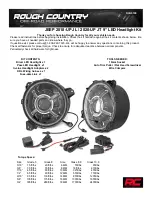
DRIVER SUPPORT
340
Detection of obstacles with City
Safety
The obstructions that City Safety can detect are
vehicles, cyclists, large animals and pedestrians.
Vehicles
City Safety detects most vehicles that are either
stationary or moving in the same direction as your
car, as well as vehicles described in the "City
Safety in cross traffic" section.
In order that City Safety shall be able to detect a
vehicle in the dark, the vehicle's front and rear
lights must be working and clearly illuminated.
Cyclists
Optimal examples of what City Safety interprets as a
cyclist — with clear body outline and bicycle outline.
Optimal performance requires that the system
function that detects a cyclist must receive the
clearest possible information about the body and
bicycle outline, requiring the ability to identify the
bicycle, head, arms, shoulders, legs, upper and
lower body plus a normal human pattern of move-
ment.
If large parts of the cyclist's body or bicycle are
not visible to the function's camera then the sys-
tem cannot detect a cyclist.
For the function to be able to detect a cyclist,
he/she must be an adult and riding a bicycle
designed for adults.
WARNING
City Safety is supplementary driver support,
but it cannot detect all cyclists in all situations
and, for example, cannot see:
•
partially obscured cyclists.
•
cyclists if the background contrast of the
cyclist is poor – warning and brake inter-
ventions may then be late or not occur at
all.
•
cyclists wearing clothing that obscures
the body outline.
•
bicycles loaded with large objects.
The driver is always responsible that the vehi-
cle is driven correctly and with a safety dis-
tance adapted to the speed.
Pedestrians
Optimal examples of what the system regards as pedes-
trians with clear body outlines.
For optimal performance, the system function
that detects pedestrians must receive the clear-
est possible information about the body outline,
requiring the ability to identify the head, arms,
shoulders, legs, upper and lower body plus a nor-
mal human pattern of movement.
In order that it shall be possible to detect a
pedestrian there must be a contrast with the
background and this will be affected by such
things as clothes, the background and the
weather. With poor contrast the pedestrian may
either be detected late or not at all, which may
mean that warnings and braking are late or omit-
ted.
Summary of Contents for XC 60 TWIN ENGINE
Page 1: ...OWNER S MANUAL ...
Page 2: ......
Page 14: ......
Page 15: ...INTRODUCTION ...
Page 29: ...INTRODUCTION 27 Fuel consumption and CO2 emissions p 600 Air quality p 181 ...
Page 58: ... INTRODUCTION 56 Overview ...
Page 61: ...SAFETY ...
Page 88: ......
Page 89: ...INSTRUMENTS AND CONTROLS ...
Page 96: ... INSTRUMENTS AND CONTROLS 94 Fuel gauge p 102 License agreement for the driver display p 103 ...
Page 180: ......
Page 181: ...CLIMATE CONTROL ...
Page 213: ...LOADING AND STORAGE ...
Page 230: ......
Page 231: ...LOCKS AND ALARM ...
Page 268: ... LOCKS AND ALARM 266 Country Area Type approval Serbia The United Arab Emirates ...
Page 270: ......
Page 271: ...DRIVER SUPPORT ...
Page 403: ...STARTING AND DRIVING ...
Page 471: ...AUDIO AND MEDIA ...
Page 518: ......
Page 519: ...WHEELS AND TYRES ...
Page 542: ......
Page 543: ...MAINTENANCE AND SERVICE ...
Page 587: ...SPECIFICATIONS ...
Page 618: ...ALPHABETICAL INDEX 616 ...
Page 619: ......
Page 620: ...TP 23064 English Int AT 1717 MY18 Copyright 2000 2017 Volvo Car Corporation ...
















































